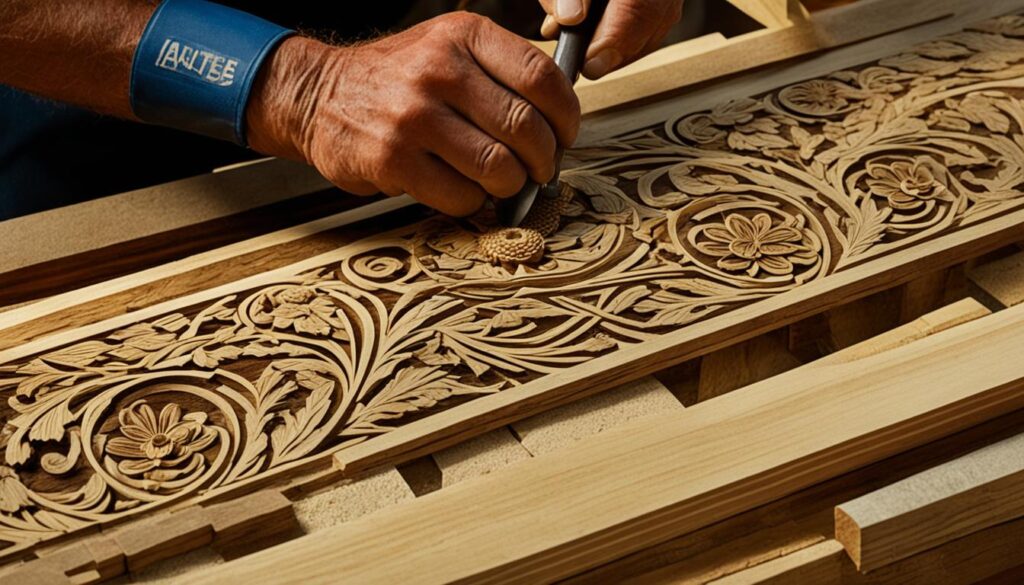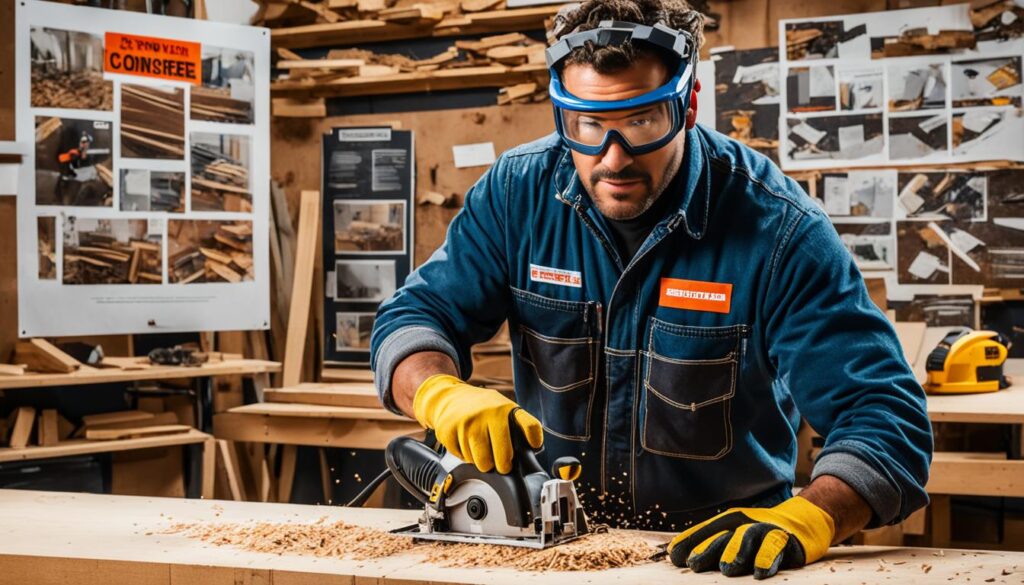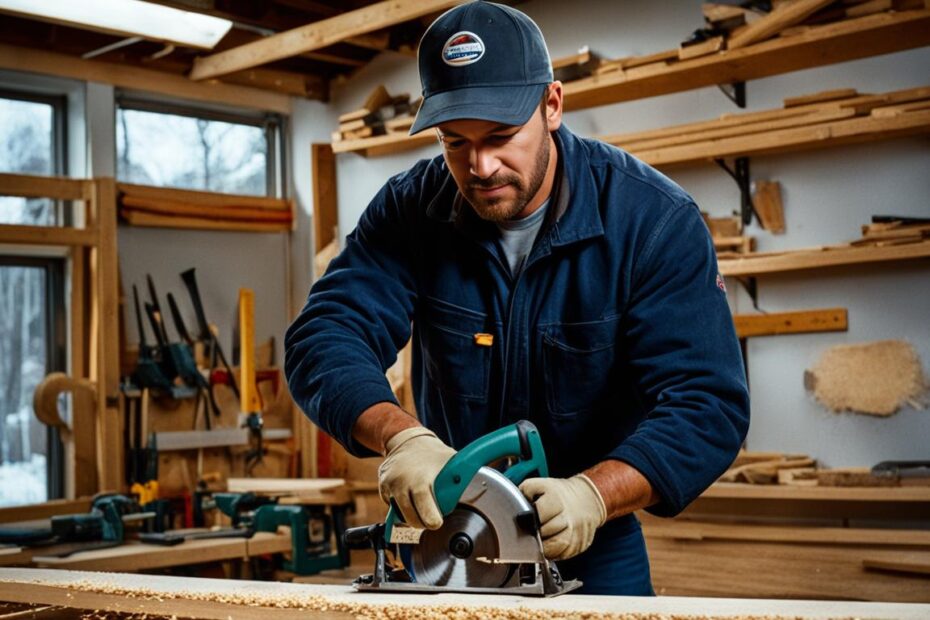Woodworking carpentry is a time-honored craft that provides both a fulfilling hobby and a rewarding career. Whether you're a beginner looking to start your woodworking journey or an experienced woodworker seeking to enhance your skills, these handy tips will guide you in the right direction.
To begin, familiarize yourself with the terminology and basic processes of woodworking, including cutting, turning, joinery, sanding, and finishing. Understanding these fundamental techniques will form the foundation of your woodworking knowledge.
Next, learn about the different types of wood and their characteristics. Each type of wood has its own unique grain pattern, color, and workability, making it essential to understand which wood is best suited for your projects.
Equipping yourself with the right tools is crucial for woodworking success. Essential hand tools such as chisels, planes, and screwdrivers, along with power tools like circular saws and routers, will enable you to shape, cut, and join wood with precision.
Safety should always be a priority in woodworking. Wearing protective gear such as safety glasses, hearing protection, and a dust mask is essential to safeguard yourself from potential hazards. Additionally, keeping your workspace clean and organized and following proper techniques will help ensure a safe and enjoyable woodworking experience.
By following these tips and putting them into practice, you'll be well on your way to honing your woodworking skills and creating beautiful, functional pieces. Let's embark on this woodworking journey together!
Key Takeaways:
- Familiarize yourself with woodworking terminology and basic processes like cutting, turning, joinery, sanding, and finishing.
- Understand the characteristics of different types of wood to choose the right one for your projects.
- Equip yourself with essential hand tools and power tools for efficient woodworking.
- Prioritize safety by wearing protective gear and maintaining a clean workspace.
- Practice and put these tips into action to improve your woodworking skills over time.
Essential Woodworking Tools for Beginners
To embark on your woodworking journey, it's crucial to have a set of essential tools. Hand tools such as a handsaw, chisels, a plane, screwdrivers, a hammer, clamps, and a hand drill are indispensable for shaping, cutting, joining, and more. Power tools like a circular saw, jigsaw, router, power drill, miter saw, table saw, and orbital sander can greatly enhance your efficiency and simplify woodworking tasks. Acquiring these tools gradually and opting for quality ones will ensure long-lasting performance.
Hand Tools:
- Handsaw: Perfect for making straight cuts and crosscuts in wood.
- Chisels: Essential for carving and shaping wood.
- Plane: Used to smooth surfaces and remove excess material.
- Screwdrivers: Necessary for driving and removing screws.
- Hammer: Ideal for driving nails and fitting joints together.
- Clamps: Provides stability and secures workpieces during assembly.
- Hand Drill: Enables drilling holes in wood.
Power Tools:
- Circular Saw: Allows for precise and efficient cutting of wood.
- Jigsaw: Perfect for making curved cuts and intricate designs.
- Router: Used for shaping edges, cutting grooves, and creating decorative finishes.
- Power Drill: Versatile tool for drilling, driving screws, and sanding.
- Miter Saw: Provides accurate crosscuts and angled cuts.
- Table Saw: Essential for cutting large pieces of wood with precision.
- Orbital Sander: Helps achieve a smooth and even finish on wood surfaces.
Investing in these woodworking tools will set you up for success and enable you to tackle a wide range of projects. Remember to start with the essentials and gradually expand your collection as you gain more experience. Quality tools will not only enhance your craftsmanship but also ensure long-lasting performance, making woodworking more enjoyable and rewarding.
Understanding Wood Characteristics and Selection
When it comes to woodworking projects, selecting the right type of wood is crucial. Each wood species possesses unique characteristics that can greatly impact both the workability and appearance of your creations. Understanding these characteristics will guide you in choosing the perfect wood for your projects.
Hardwoods are known for their durability and strength, making them ideal for furniture and decorative items. Examples of popular hardwoods include cherry and walnut. Not only do these woods offer exceptional stability, but they also boast rich hues that can enhance the beauty of your finished pieces.
Softer woods, on the other hand, like ash and poplar, have a more neutral color palette. They are often used for construction, moldings, and millwork. The softness of these woods allows for easier shaping and carving, making them suitable for intricate designs.
However, the characteristics of wood extend beyond color and hardness. Other factors to consider when selecting wood for your projects include:
- Straightness: It is important to choose wood that has minimal warping or bending. Straighter boards are easier to work with and result in more precise cuts and joints.
- Knots: Knots are natural imperfections in wood caused by branches or other growth factors. While some knots can add character to your projects, others may weaken the wood and affect its strength.
- Moisture Content: Properly dried wood is essential for preventing warping and shrinking after your project is complete. Ensure the wood has an appropriate moisture content for the specific project you are undertaking.
By understanding these wood characteristics and considering these factors, you can confidently select the right wood for your woodworking projects. Using high-quality materials will not only improve the appearance of your creations but also enhance their durability.
“Selecting the right type of wood is like choosing the foundation of your woodworking project. It can determine the overall quality and longevity of your creations.” – Woodworking Expert
Learning Carpentry Techniques and Processes
In the world of woodworking, mastering various carpentry techniques and processes is essential to elevate your projects and create beautiful and durable pieces. From cutting and turning to joinery, sanding, and finishing, each technique plays a crucial role in bringing your woodworking vision to life.
Familiarize Yourself with Carpentry Techniques
One of the first steps in honing your carpentry skills is to familiarize yourself with different techniques. By understanding when and how to use each technique, you can enhance the quality and craftsmanship of your woodworking projects.
“Learning carpentry techniques allows us to create intricate and durable pieces that stand the test of time.”
Here are some key techniques you should explore:
- Cutting: Mastering crosscuts and rip cuts is vital for shaping and dividing wood to the desired size.
- Turning: Hollowing out a workpiece through turning enables you to create beautiful cylindrical shapes, such as table legs or decorative elements.
- Joinery: Traditional joinery methods like mortise and tenon, dovetail, and finger joints allow you to connect pieces of wood securely and create strong and visually appealing joints.
- Sanding: Proper sanding techniques help you achieve smooth surfaces and remove imperfections, ensuring a professional finish.
- Finishing: Applying finishes such as stain, paint, or varnish protects the wood and enhances its natural beauty, giving your projects a polished look.
Achieve Mastery through Practice
Acquiring carpentry techniques takes time and practice. Start by working on small projects that allow you to master specific techniques before progressing to more complex endeavors. Remember, practice not only builds your skills but also boosts your confidence as you witness your woodworking capabilities grow.
Essential Carpentry Techniques and Processes
| Technique | Description |
|---|---|
| Cutting | Shaping and dividing wood through crosscuts and rip cuts. |
| Turning | Hollowing out a workpiece to create cylindrical shapes. |
| Joinery | Connecting wood pieces using traditional methods like mortise and tenon, dovetail, and finger joints. |
| Sanding | Smoothing surfaces and removing imperfections through proper sanding techniques. |
| Finishing | Applying finishes to protect and enhance the wood's appearance. |

By mastering these fundamental carpentry techniques, you can expand your woodworking capabilities and achieve remarkable results in your projects. Practice regularly and experiment with different techniques to unlock your full potential as a carpenter.
Safety Measures and Tips for Woodworking
Safety should always be a top priority in woodworking. To ensure a safe and enjoyable woodworking experience, it's important to implement proper safety measures and use the right safety gear. Here are some essential tips to keep in mind:
1. Protective Gear
Wearing appropriate safety gear is crucial to protect yourself from potential hazards. Invest in shatter and scratch-resistant safety glasses to shield your eyes from flying debris or wood chips. Use hearing protection, such as earmuffs or earplugs, to reduce exposure to loud noises produced by power tools. Additionally, always wear a dust mask to prevent inhalation of fine particles and wood dust that can be harmful to your lungs.
2. Workspace Safety
Maintaining a clean and organized workspace is essential to reduce the risk of accidents. Keep your work area free from clutter and promptly remove any wood scraps, tools, or debris that may obstruct your movement. Consider using a dust collection system or a shop vacuum to minimize the accumulation of wood dust, which can pose a fire hazard. Furthermore, having a fire extinguisher readily available in your woodshop is essential for quickly suppressing any potential fires.
3. Proper Technique
Learning proper techniques is crucial for both safety and achieving precise woodworking results. Always follow the correct procedures when using different tools and machinery, such as using push sticks or feather boards to maintain control and stability while feeding wood into saws or routers. When working with hand tools, ensure a secure grip and proper posture to avoid slips or strain injuries. Familiarize yourself with safe cutting techniques to prevent accidental injuries, and never rush through tasks without proper concentration.
4. Handling Sharp Tools and Power Equipment
Sharp cutting tools and powerful equipment are integral to woodworking but can also pose a risk if not handled with care. Keep cutting tools, such as chisels or knives, properly sharpened to ensure clean cuts and reduce the chance of slips. When operating power tools, such as table saws or routers, use safety features like blade guards or push blocks to prevent accidental contact with moving parts. Before making any adjustments or maintenance tasks, ensure that the power is switched off and the equipment is unplugged.
| Safety Tips | Description |
|---|---|
| Always use push sticks | Use push sticks or blocks to maintain control when feeding wood into saws. |
| Keep blades sharp | Sharp blades reduce the chances of slips or kickbacks while cutting. |
| Familiarize yourself with safety features | Understand the safety features of power tools and use them accordingly. |
| Take breaks and stay hydrated | Woodworking can be physically demanding, so remember to rest and stay hydrated. |
By following these safety measures and tips, you can ensure a safe working environment and minimize the risk of accidents or injuries. Remember, woodworking can be a fulfilling and enjoyable craft when practiced with the necessary precautions.

Conclusion: Woodworking carpentry
Woodworking carpentry is a timeless craft that offers endless possibilities for creativity and satisfaction. By following these handy tips, investing in the right tools, understanding wood characteristics, learning carpentry techniques, and prioritizing safety, you'll be well-equipped to embark on your woodworking journey.
Starting with simple projects and gradually taking on more challenging ones will allow you to hone your skills and build confidence. Remember, practice makes perfect, so dedicating regular time to woodworking will yield great results. Don't be discouraged by setbacks; instead, view them as opportunities to learn and improve.
Whether you're pursuing woodworking as a hobby or considering it as a career, the joy in creating beautiful and functional wooden pieces is immeasurable. Embrace the process, take pride in your craftsmanship, and enjoy the satisfaction of seeing your vision come to life through the art of woodworking carpentry.
FAQ
What are some essential woodworking tools for beginners?
How do I select the right wood for my projects?
When selecting wood for your projects, consider factors such as hardness, grain patterns, colors, textures, straightness, knots, and moisture content. Hardwoods like cherry and walnut offer rich hues, while softer woods like ash and poplar provide a more neutral palette.
What are some common carpentry techniques and processes in woodworking?
Common carpentry techniques and processes in woodworking include cutting, turning, joinery, sanding, and finishing. These techniques involve tasks such as making crosscuts and rip cuts, hollowing out a workpiece through turning, and connecting pieces of wood using methods like mortise and tenon joinery.
What safety measures should I follow in woodworking?
In woodworking, it's important to prioritize safety. Wear shatter and scratch-resistant safety glasses, hearing protection, and a dust mask. Keep your workspace clean, have a fire extinguisher on hand, and use clamps for stability. Handle sharp cutting tools and powerful equipment with care and learn proper techniques to minimize the risk of accidents.
What are some final tips for woodworking carpentry enthusiasts?
Start with simple projects, practice regularly, and celebrate your progress. Embrace the joy of creating beautiful and functional wooden pieces. Whether you're pursuing woodworking as a hobby or considering it as a career, enjoy the process and continue to learn and improve your skills.




